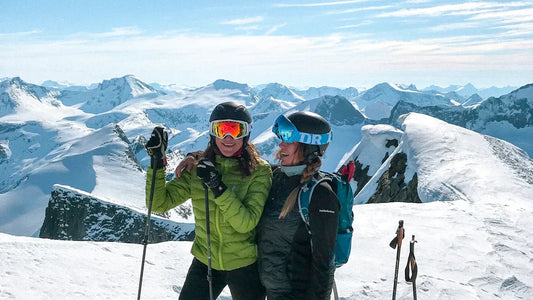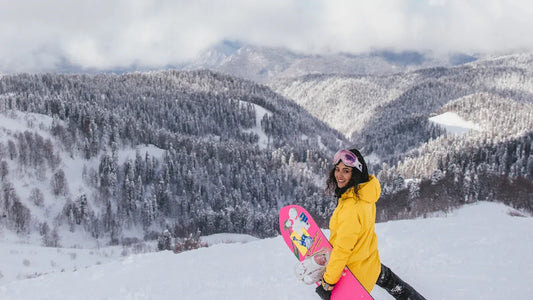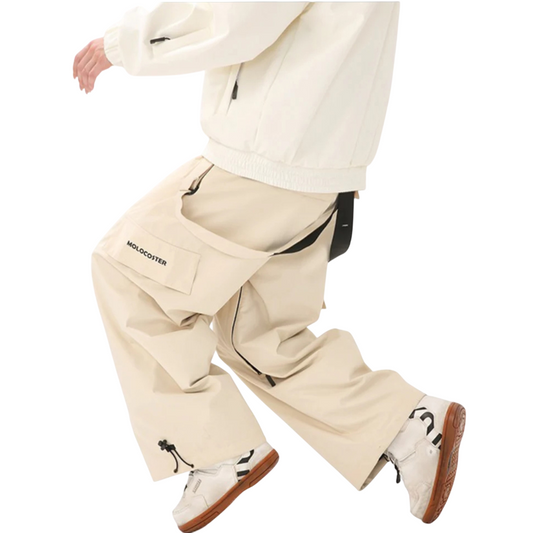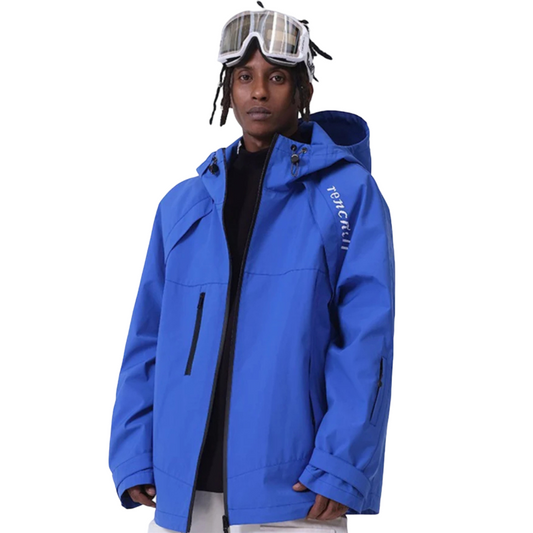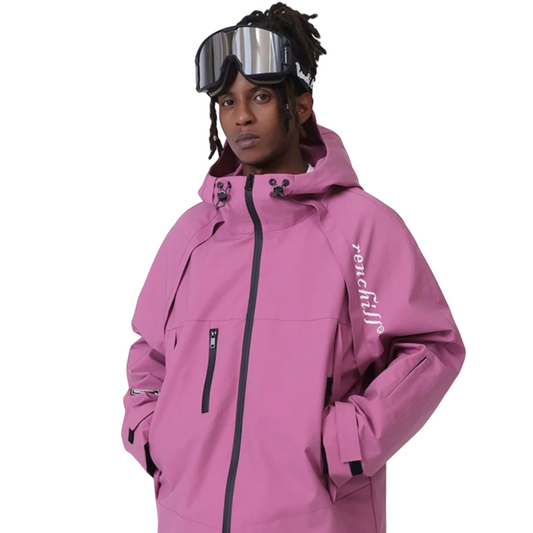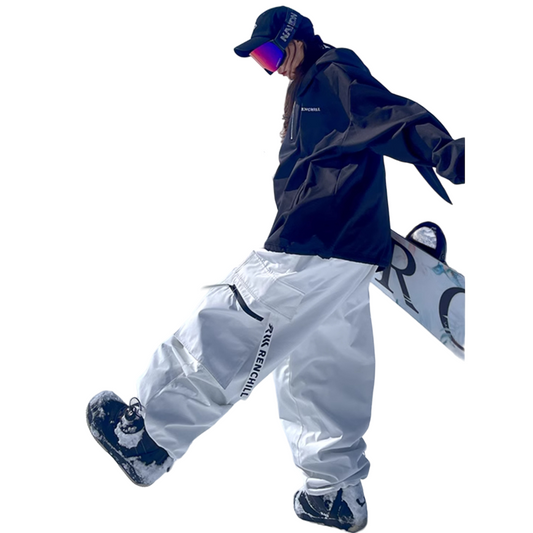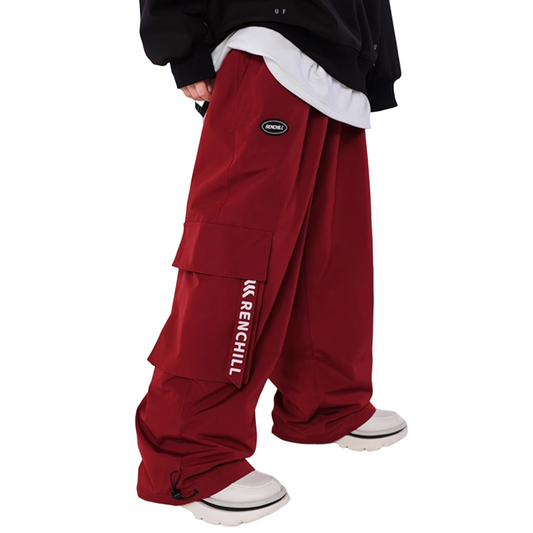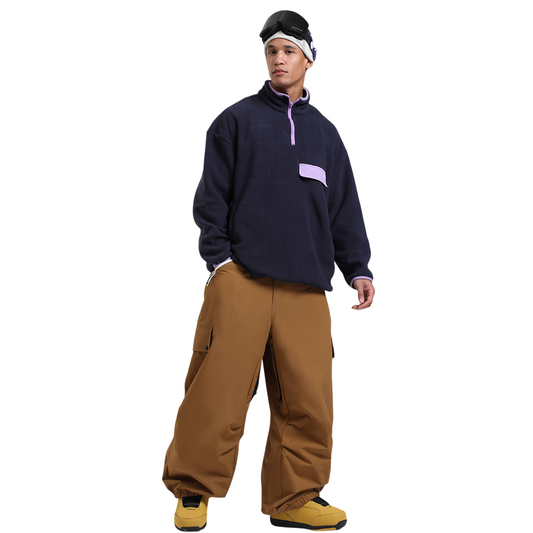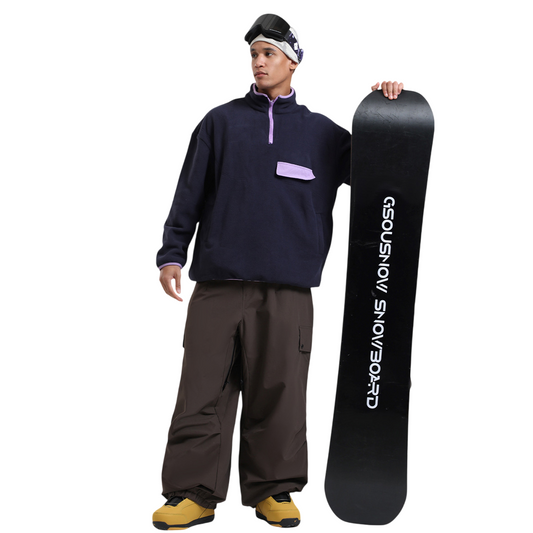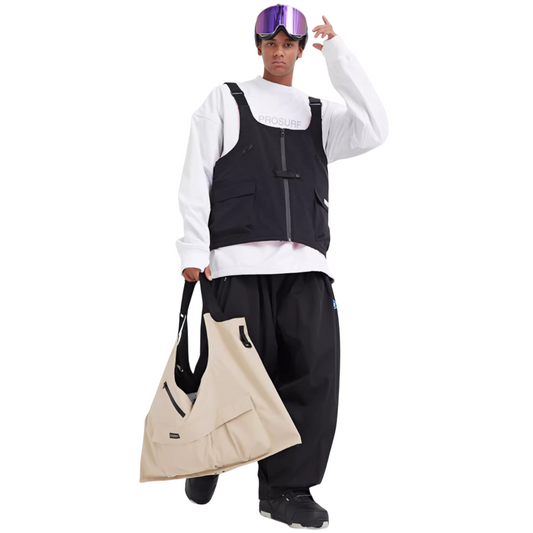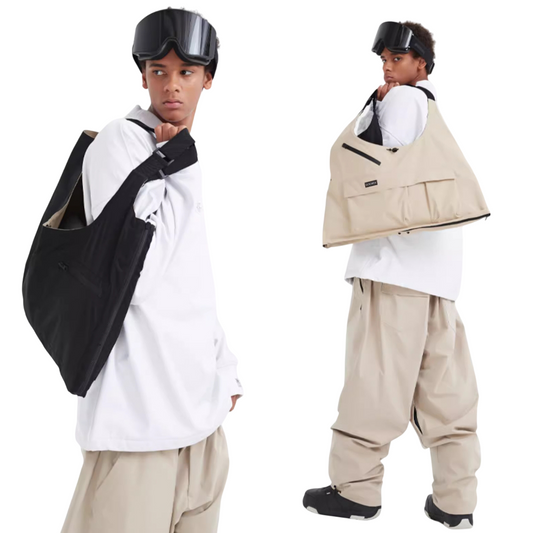Choosing the right ladies bib ski pants makes your backcountry skiing safer, warmer, and more comfortable. Ski bibs offer superior insulation and coverage, keeping you cozy in cold climates while shielding you from wind and snow. In 2025, premium features such as adjustable straps, reinforced knees, and advanced ventilation systems will be industry standards. SNOWMOCACA Women’s Ski Pants, for example, combine high-performance fabrics with stylish designs, ensuring both durability and breathability for your next alpine adventure.
Why Ladies Bib Ski Pants Are Ideal for Backcountry Skiing
1. Superior Coverage & Protection
Ladies bib ski pants extend over the chest, creating a barrier against cold air and wind. This high-rise design traps body heat more effectively than traditional waist-high ski pants, reducing drafts around the lower back and waist. When you’re deep in fresh powder, the tall bib design prevents snow from creeping into your layers, keeping you dry and focused on the terrain ahead.
-
High-Waist Design
Prevents snow intrusion at the waistline, ensuring that lower-body insulation stays effective even after falls or deep plunges. -
Extended Insulation
The upper bib section adds an extra layer of warmth for your core, essential for long ascents or cold, windy ridge traverses. -
Integrated Boot Gaiters
Seal out moisture at the ankle, eliminating the risk of snow collecting in your boots.
Many 2025 models use Dermizax EV Membrane or similar high-end materials, offering a 20K–30K waterproof rating and MVTR values above 3,000 g/m²/24 h. Durable kick patches and abrasion-resistant overlays on knees and cuffs further enhance longevity when you’re skiing over rocky terrain.
2. Ample Storage & Functionality
Backcountry trips often require carrying snacks, a map, an avalanche tool, and other essentials. Ladies bib ski pants excel by incorporating:
-
Multiple Zippered Pockets
Strategically placed, water-resistant zippered pockets on the chest and thighs let you stow and access items without removing gloves. -
Drop-Seat Access
Some bibs feature a drop-seat (also known as a “rocker” or “rear-entry zipper”), allowing quick restroom breaks without fully removing layers. -
Tool Loops & Pass-Through Openings
Designed for climbing skins or ski passes, these features make transitions on steep slopes quick and hassle-free.
Functional details like reinforced suspender attachments and robust YKK® zippers prevent failures in cold or wet conditions, a must when miles away from a lodge.
3. Comfort for All-Day Skiing
Long days topping out peaks and earning runs demand ski pants that move with you. Look for:
-
Stretch-Infused Fabrics
Four-way stretch panels in the seat and knees, like those found in the Flylow Gear Foxy Bib, enable effortless mobility during kick turns and deep squats. -
Articulated Knee Construction
A pre-shaped knee design reduces fabric bunching and helps maintain a natural range of motion. -
Breathable Mesh Linings
Ventilation channels wick moisture away from your skin, preventing clamminess during uphill efforts. -
Adjustable Suspenders & Waist Closures
Customizable straps and Velcro®-adjustable waist tabs tailor the fit to your body shape, stopping bibs from slipping during steep skin tracks.
Brands like Trew Gear and Patagonia are known for offering multiple inseam lengths and customizable fits. When trying on ladies bib ski pants, confirm that the shoulder straps lay flat without digging in and that you can comfortably lift your arms overhead without fabric restriction.
Local Backcountry Hotspots
For women planning tours in North America, the Colorado Rockies—especially areas like Vail Pass and the San Juan Range—are legendary for their powder. In Europe, Val d’Isère and Chamonix-Mont-Blanc in France offer challenging alpine terrain. For those heading to Japan, Niseko’s famed “Japow” region on Hokkaido is a dream destination. Wherever you plan to ski, selecting the right ladies bib ski pants—taking into account altitude, average winter temperatures (e.g., Aspen, CO drops to –15 °F/–26 °C in January), and prevailing wind speeds—ensures optimal performance and comfort.
SNOWMOCACA Women’s Ski Pants: Style Meets Functionality
Innovative Fabrics for Rugged Performance
SNOWMOCACA’s 2025 lineup features:
-
3-Layer Laminates with DWR Finish
Combines a durable outer shell, waterproof membrane, and comfortable inner lining. The PFC-free Durable Water Repellent (DWR) sheds moisture, ensuring long-lasting waterproofing. -
Reinforced High-Wear Zones
Heavy-duty 600D nylon kick patches at the hem protect against ski edges and crampon abrasion. Bar-tacked stress points at the suspenders and belt loops ensure reliability in extreme conditions.
Comparable models, such as the Arc’teryx Sentinel Bib and the Flylow Siren Bib, feature similar 30K/30K fabrics with added stretch panels. SNOWMOCACA matches these performance standards while maintaining competitive pricing.
Versatile Design Tailored for Women
Features specific to SNOWMOCACA ladies bib ski pants include:
-
Slim Silhouette with Adjustable Volume
Contoured fit through hips and thighs, with zippered side gussets to expand when wearing bulky base layers. A 3,200 g/m²/24 h MVTR rating ensures ideal breathability for high-output backcountry travel. -
Chic Colorways & Minimalist Aesthetic
Available in earth tones (Charcoal, Olive, Burgundy) that blend into alpine landscapes. Subtle reflective accents enhance visibility during dawn or dusk tours. -
User-Friendly Storage
Dual hand pockets at the hips plus a single chest pocket, each with PU-coated zippers. Internal pass-through for hydration hose compatibility allows you to drink on the move.
This combination of functional design elements and tasteful styling makes SNOWMOCACA a standout choice in 2025 for ladies bib ski pants.
Real-World Test: Women’s Backcountry Tour at Lake Tahoe
Last February, a women’s ski group at Heavenly Mountain Resort (Lake Tahoe, CA/NV) tested SNOWMOCACA ladies bib ski pants during a three-day hut-to-hut tour. At elevations above 9,000 ft (2,743 m), temperatures hovered around 10 °F (–12 °C). Participants praised the pants for:
- Exceptional Windproofing: Even on exposed ridge lines above the lake, the Dermizax EV membrane blocked gusts up to 30 mph (48 km/h).
- Quick-Dry Performance: When ascending on skintrack, sweat evaporated rapidly thanks to the 3,000 g/m²/24 h MVTR rating; ankle gaiters kept snow out during deep powder descents at Squaw Valley.
- Fit for Diverse Body Types: From S to XXL, adjustable straps and contoured waists accommodated varying mid-layer thicknesses, making them ideal for this Sierra region’s mixed conditions.
Key Features to Evaluate in Ladies Bib Ski Pants
Waterproofing & Breathability
Waterproof and breathable fabrics prevent external moisture from penetrating while allowing sweat vapor to escape. For backcountry skiing:
-
Membrane Ratings (Waterproof/Breathable)
-
Aim for a minimum of 20K/20K (20,000 mm waterproof rating / 20,000 g/m²/24 h breathability).
-
Premium models target 30K/30K (e.g., Flylow Siren Bib) for extreme conditions.
-
-
Three-Layer vs. Two-Layer Construction
-
3-Layer: Outermost fabric, a waterproof/breathable membrane, and a robust inner lining for durability. Ideal for extended backcountry use.
-
2-Layer: Lighter and more packable but trades some durability for reduced weight. Best for short tours or milder climates.
-
-
Seam Taping & Reinforcements
Ensure all critical seams are fully taped. Reinforced areas around the seat, inner cuffs, and kick patches protect against ski edges, crampons, and abrasive rocks.
| Fabric/Liner Name | MVTR (g/m²/24 h) | Waterproof Rating (mm) |
|---|---|---|
| Dermizax EV Membrane | 3,000+ | 28,000 |
| Gore-Tex Pro (3L) | 3,000 | 28,000 |
| NEOSHELL® Laminates | 2,940 | 20,000 |
| Futurelight™ (TNF) | 2,780 | 30,000 |
Insulated vs. Shell Bib Pants
-
Insulated Bibs
-
Advantages: Built-in synthetic insulation (often 80–100 g/m²) adds warmth in subfreezing conditions.
-
Ideal For: Cold-weather missions, early-season tours, or ski mountaineering in alpine environments where temperatures dip below 0 °F (–18 °C).
-
Example: Patagonia Women’s Insulated Snowdrifter Bibs (85 g/m² synthetic fill) provide warmth even when damp.
-
-
Shell-Only Bibs
-
Advantages: Lighter and more versatile. Excellent for milder days or high-output pursuits where overheating is a concern.
-
Ideal For: Summer backcountry tours, faster ascents, or multi-day hut trips with variable weather.
-
Layering Tip: Under a shell bib, wear a light synthetic midlayer (e.g., merino-blend leggings) to dial in insulation as conditions change.
-
Tip: If you ski in mixed conditions, pair a shell bib with a slim-fitting insulated pant liner. This combo allows you to vent heat during climbs and add warmth on descents.
Ventilation for Temperature Control
Backcountry ascents can elevate your body temperature quickly. Effective ventilation features include:
-
Zip-Off Thigh Vents
Mesh-lined, full-length vents on inner thighs facilitate rapid cool-down during sustained climbs. -
Pit Zips (Underarm)
Found on hybrid bib–jacket systems; release excess heat without removing layers. -
Strategic Mesh Panels
Integrated behind knee areas or along the inner thigh maximize airflow without letting in snow.
Example: The Black Diamond Recon Stretch Bib features dual pit zips that provide exceptional airflow, keeping you comfortable when transitioning from uphill skinning to bootpacking.
Pockets & Storage Solutions
A well-designed ladies bib ski pant should offer enough storage for expedition essentials:
-
Chest & Thigh Pockets
– Water-resistant zippers protect electronics (GPS, phone) and snacks.
– External pockets should be positioned so you can reach them while wearing a harness or pack. -
Cargo Pockets
– Large enough to hold an avalanche probe handle or quick snacks. -
Internal Mesh Pockets
– Perfect for stashing dead batteries or small tools that need to stay dry.
Ensure all pockets are easily accessible, even with a backpack strap over the shoulders. Look for reinforced stitching around pocket openings to prevent fabric tears during frequent use.
Snow Gaiters & Reinforced Cuffs
Maintaining a dry boot lower is critical in deep powder or wet-snow conditions:
-
Integrated Snow Gaiters
– Elasticized, hidden gaiters that cinch over ski boots to block snow entry.
– Look for a grippy, silicone-lined cuff to keep them securely in place. -
Reinforced Inner Cuffs
– Abrasion-resistant panels (e.g., 500D fabric) safeguard against ski edges, crampons, and rocky trails.
– Reinforcements around the hem resist tearing when kicking steps or edging on steep terrain.
High-quality reinforcements extend the life of your bibs, especially if you tackle frequent ski-mountaineering or rugged backcountry runs.
Fit & Comfort Considerations for Women’s Bib Ski Pants
Adjustable Straps & Contoured Waistbands
A proper fit ensures warmth, freedom of movement, and prevents gaps that allow cold air to seep in:
-
Adjustable Shoulder Straps
– Look for wide, padded straps to distribute weight evenly and avoid shoulder fatigue.
– Quick-release buckles allow on-the-go adjustments, even with gloves on. -
Contoured, Elastic Waistbands
– Elasticized side panels or integrated Velcro® tabs adapt to changing base-layer thickness.
– A higher rear waist panel reinforces core warmth and keeps the bibs in place during deep bends or terrain transitions.
SNOWMOCACA integrates microfiber-lined inner waistbands to reduce chafing and provide a softer feel against your mid-layers.
Mobility & Ergonomic Design
Backcountry skiing demands full range of motion. Seek out:
-
Articulated Knees & Gusseted Crotches
– Pre-shaped knees mimic the natural flexion of your legs, preventing fabric pull when skiing or skinning.
– Gusset panels in the crotch area reduce seam pressure, enabling deeper squats and easier kick turns. -
Four-Way Stretch Panels
– Strategic placement of spandex-blend fabrics in the seat and knees offers stretch without sacrificing durability.
– Ensures unrestricted movement when shouldering skis or hiking steep couloirs. -
Ergonomic Tailoring
– A slightly tapered fit through the thigh and knee reduces bulk without compromising layering capability.
– Women-specific sizing accounts for hip-to-waist ratios, avoiding gaping waistbands or tight thighs.
Example: The Ortovox 3L Deep Shell Bib’s ergonomic cut allows skiers to ascend and descend without feeling restricted, thanks to its articulated patterning and stretchy mid-layer panels.
Quick Answer Sections
Quick Answer: When Should I Choose Insulated Bibs vs. Shell-Only Bibs?
- Insulated Bibs are recommended for temperatures consistently below 20 °F (–6 °C), especially if you pause frequently (e.g., for avalanche safety checks). They keep you warm without requiring bulky midlayers.
- Shell-Only Bibs shine when you expect temperature swings between 20 °F to 40 °F (–6 °C to 4 °C) and when you hike long skintracks—ventilation and layering flexibility prevent overheating.
Quick Answer: How Do I Maintain the DWR Finish on My Bib Ski Pants?
- Machine wash with a technical wash solution (e.g., NIKWAX® Tech Wash). Avoid fabric softeners. After 5–10 washes, reapply a PFC-free DWR spray to restore water repellency.
Quick Answer: Which Ventilation Features Work Best for Uphill Skinning?
- Full-length inner-thigh vents with fine mesh liners allow maximal airflow. Combine them with pit zips on your jacket to regulate core temperature during steep ascents.
What Are the Best Ladies Bib Ski Pants for Tahoe Backcountry Tours?
For backcountry tours around Lake Tahoe (e.g., Desolation Wilderness, Palisades Tahoe), look for bibs with at least 20K/20K waterproof/breathability. SNOWMOCACA’s 3-layer bib keeps you dry in Tahoe’s notorious late-winter storms when temperatures drop below 15 °F (–9 °C). The full-length inner-thigh vents prevent overheating during long skintracks up Corral Ridge. Additionally, the Powell Mountain Ski Patrol in Tahoe tested these bibs at 9,200 ft elevation and confirmed they held up to gusts over 40 mph (64 km/h) near Pickett Peak.
Making the Right Choice: Summary of Must-Have Features
-
High Waterproof & Breathability Ratings
-
Aim for at least 20K/20K; for wet or coastal regions, prefer 30K/30K (e.g., Gore-Tex Pro, Futurelight™).
-
-
Adjustable Fit & Ergonomics
-
Secure shoulder straps, elastic waistbands, and articulated knees provide a custom fit and freedom of movement.
-
-
Durable Reinforcements
-
Reinforced cuffs, kick patches, and taped seams enhance longevity when skiing on abrasive snow or rocky slopes.
-
-
Ample Storage & Practical Details
-
Multiple water-resistant pockets, drop-seat features, and pass-throughs for hydration systems.
-
-
Effective Ventilation
-
Thigh vents or pit zips prevent overheating, essential during climbs or variable weather conditions.
-
By focusing on these critical factors, you’ll select ladies bib ski pants that keep you warm, dry, and agile—key determinants of performance and enjoyment on any backcountry ski tour.
Current Promotion: Free Shipping on Orders Over $99
SNOWMOCACA is currently offering free shipping on all orders over $99. Studies show that eliminating shipping costs encourages higher average order values and repeat purchases.
| Free Shipping Threshold | Average Items per Order | Average Spend (Without Promotion) |
|---|---|---|
| $49 | 3.31 | $17 less |
| $25 | 2.53 | $12 less |
Take advantage of this limited-time offer to upgrade your backcountry gear. Pair your SNOWMOCACA ladies bib ski pants with other essentials—jackets, midlayers, and accessories—to maximize savings and ensure you’re ready for any 2025 backcountry adventure.
FAQ
-
How do I choose the right size for ladies bib ski pants?
Measure your waist, hips, and inseam. Compare these measurements to the brand’s size chart. Look for adjustable shoulder straps and Velcro® waist tabs to fine-tune the fit. If you’re between sizes, choose the larger size to accommodate base layers and midlayers. -
Can I wear layers under my bib ski pants?
Absolutely. Layering is crucial for backcountry skiing. Opt for a lightweight, moisture-wicking base layer (e.g., merino wool leggings) to stay warm and dry. If using a shell-only bib, add a light insulated liner pant on colder days to adjust warmth as conditions change. -
How do I maintain the waterproofing of my ski pants?
Machine wash with a gentle, non-detergent cleaner specifically formulated for waterproof fabrics (e.g., NIKWAX® Tech Wash). Avoid fabric softeners and bleach. Reapply a DWR spray or wash-in treatment after 5–10 wash cycles to restore water repellency. Always follow the care instructions on the manufacturer’s label.





